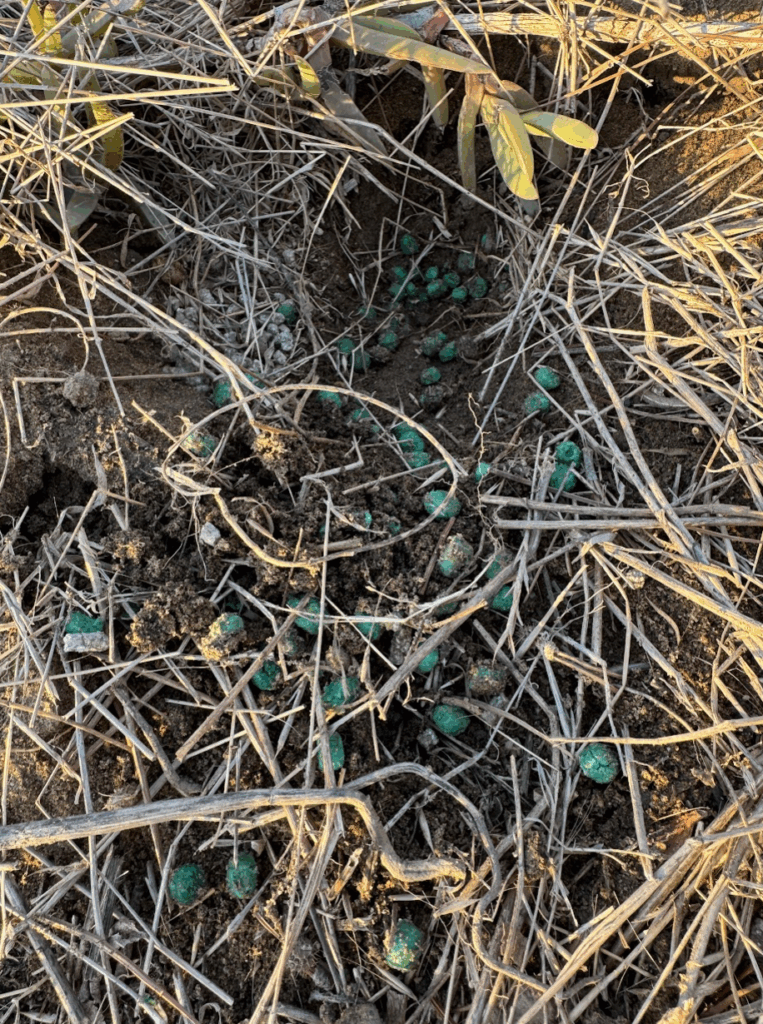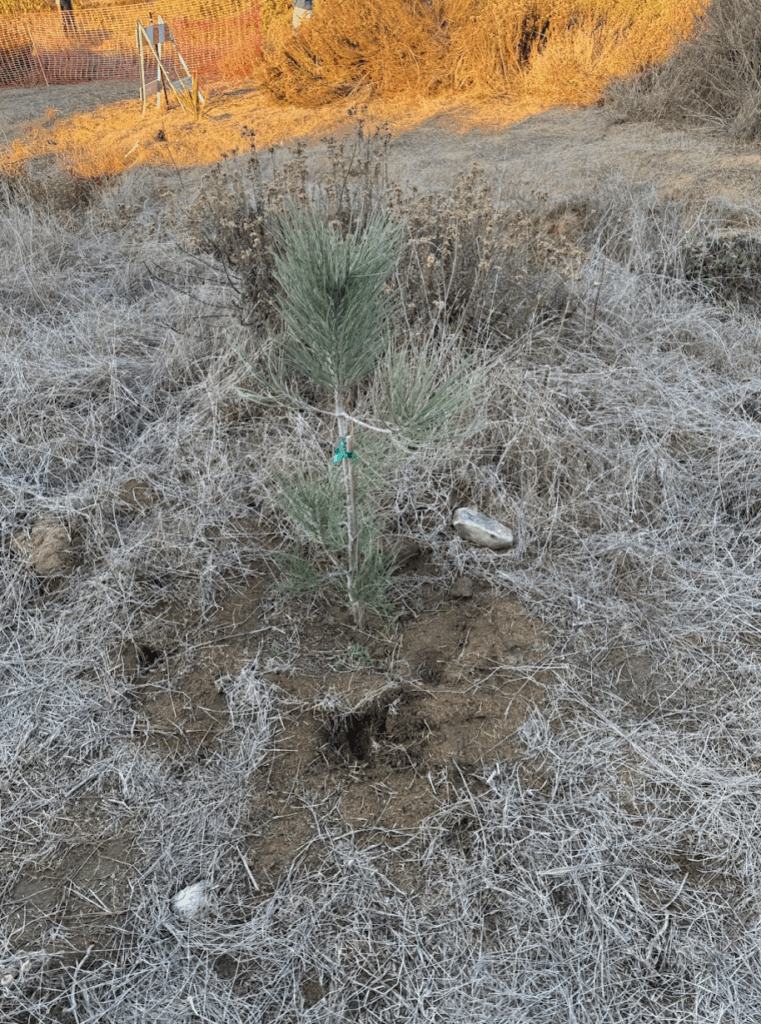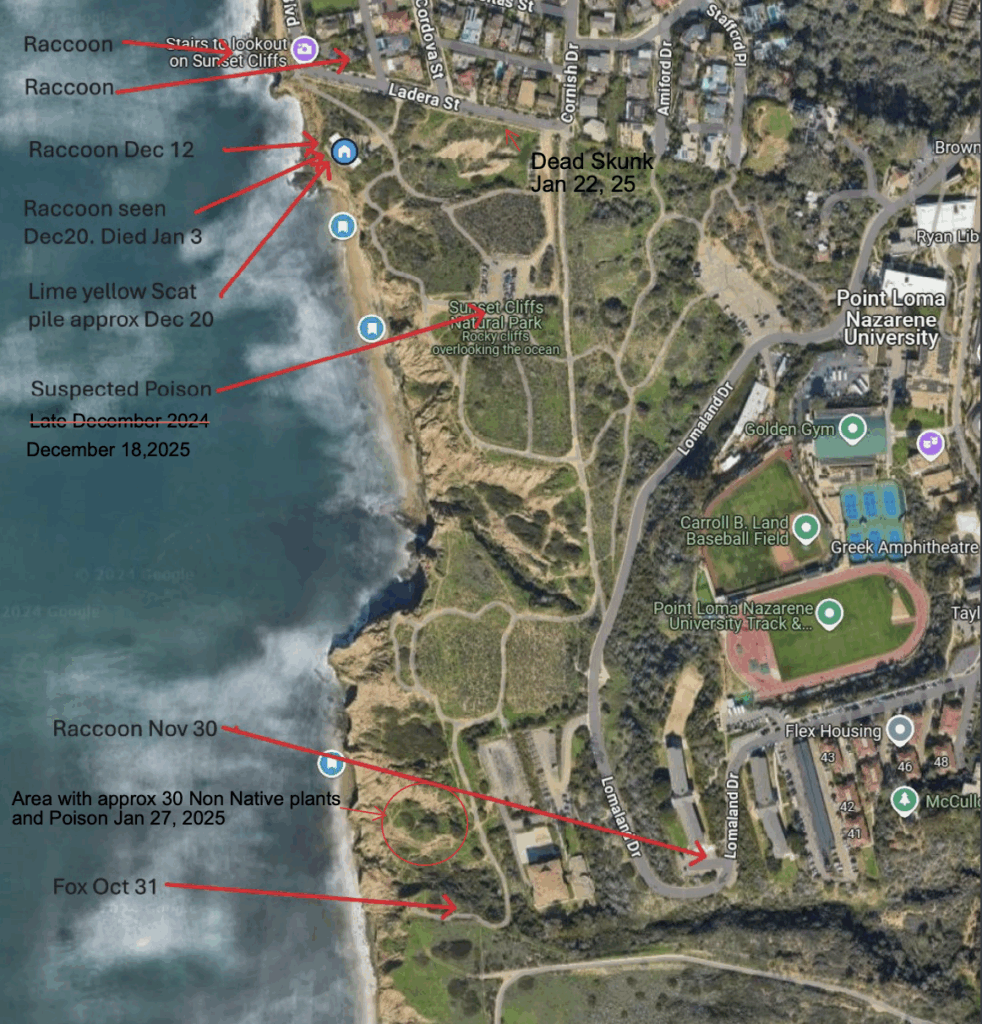The raccoons on Point Loma Nazarene University’s campus have turned into the center of a wildlife conundrum as a recent die-off has led to concerns over illegal poisoning and the spread of disease among the animals.

Brad Lally, resident and volunteer with the San Diego Humane Society, first noticed something was wrong in late January when a neighbor found a suspicious teal blue substance in the brush by the cliffs after a heavy rainstorm.
“It was really fresh looking and still kind of soft,” he said. “We’re sure that lot was spread around Jan. 26 and 27.”
The substance was later identified as a banned rodenticide by the San Diego Humane Society, which became illegal in California on Jan. 1 this year due to its harmful ecological effects.
The poison was discovered by Lally and one of his neighbors on Sunset Cliffs Natural Park by the call box at Young Hall. It was placed around Torrey Pine trees that had recently been guerrilla planted on the cliffs.
“We don’t know for sure if the people who planted the trees are connected,” Lally said, “but that’s where the poison was found – laced all down this area.”
The poison is currently unidentified and could either be first or second-generation anticoagulant rodenticides, which were banned in California by Governor Gavin Newsom because they pose serious risks to wildlife.
“It’s a blood thinner,” Lally said. “The animal bleeds from the inside out. When it gets into the food chain, it causes neurological disorders.”
These poisons don’t kill rodents immediately, so the animals often wander out into the open and are eaten by predators, causing bioaccumulation and secondary poisoning. Anyone who sells or uses banned pest control solutions of first- or second-generation anticoagulant rodenticides will face a $25,000 fine per day per violation, along with any other penalties established by law under AB 2552.
While it is unclear who planted the poison and why they would do so, Lally said he has his suspicions that it was an intentional act.
“Why else would you do it?” Lally said. “They dug a little trench in front [of the tree] and scattered the poison so it would do maximum damage.”

Faculty members on campus also noticed the disappearance of wildlife and had suspicions about where they could have gone.
“I would think someone was trying to kill rats or something,” Eric Maliepaard, a PLNU shuttle driver, said, who sees the raccoons on his regular route. “My friend thinks one of the houses got mad at the raccoons for knocking the trash cans over.”
Wildlife loss was swift and devastating. Lally, who monitors the local raccoon population with cameras near his home, said he used to spot up to 14 different raccoons a night. Now, he only sees three at a time.
“There was one [dead raccoon] right by the stairs. There was one across the street. There were two at my house – a little one and then a whole family died,” he said.
Other animals – hawks, skunks and even foxes – have also gone missing.
No longer having as much wildlife around has affected PLNU students, as they were a common part of campus life.
“It feels weird now that the raccoons aren’t around, especially since I got so used to seeing them near the dorms all the time,” Addison Martin, a first-year psychology major, said. “Students even made names for them, fed them and would always be on the lookout, taking pictures and videos of them.”
Students also created an Instagram account, @loma.raccoons, highlighting all of their sightings.
The wildlife on campus also brought a sense of connection and excitement for faculty members.
“The foxes were really special to me,” Maliepaard said, who used to see them at night near the Fermanian School of Business. “They’d let you get really close to them. I’m really bummed that they’re not there.”
Lally said distemper, a contagious viral disease common in raccoons, may be responsible for their population decline as well.
“Distemper spreads really easily, especially when they’re really close together,” Lally said.
The overlap in timing of the disease and poisoning makes it hard to separate the two, but the spike in deaths caught the attention of state and local authorities.
Once the illegal poison was discovered, the state and city Humane Law Enforcement launched an investigation. Information regarding the case could not be shared, according to the Humane Law Enforcement’s phone receptionist.
Assistant Director of the Department of Public Safety, Kaz Trypuc, said that a Humane Law Enforcement park ranger came into the office, informing them of the situation, asking if they had any information or had seen any suspicious activity on the cliffs. Trypuc said Public Safety responded, saying they had no information, as the poisoning was not directly on campus grounds.

Pins were posted on a map of where the poison was found, and any future animal deaths will be tested. According to Lally, he and other volunteers with the Humane Society cleaned up the poison, which took about a week to do. There have been no new poisonings since, and the investigation remains active and visible as the raccoon sightings have not yet returned.
“I can’t see how you can say that you love the park and want to have nature, but you put things out to kill it,” Lally said.
Martin said that the raccoons were friendly and were like “backyard pets.”
“They were a part of our environment, and they’re fun because they brought liveliness to our campus,” she said.
With spring mating season underway, Lally said if Point Loma residents “start seeing more kits in the next few months, we’ll know the raccoons are coming back.”
